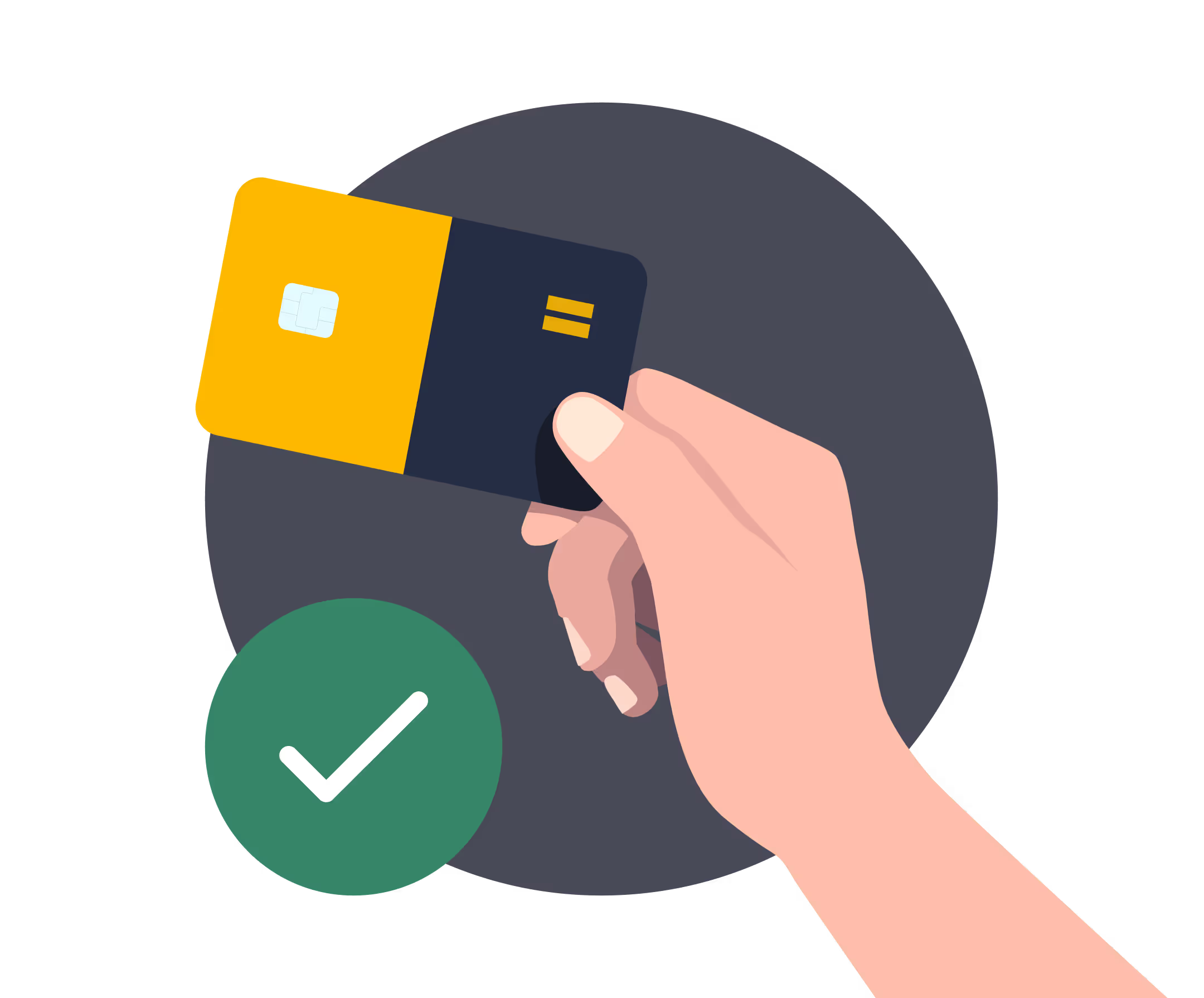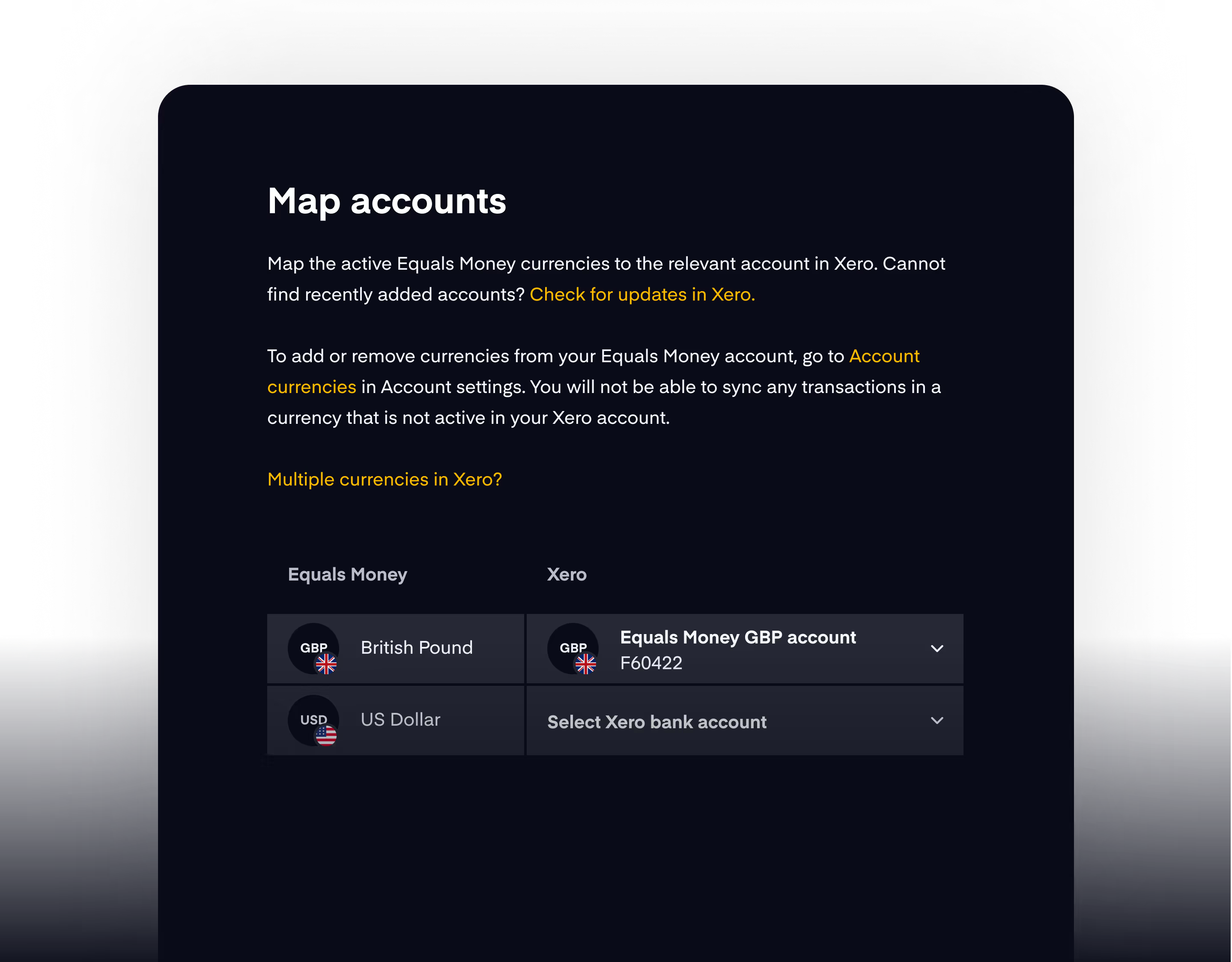AUD
The Australian dollar (AUD) is one of the world’s most popular and widely traded currencies, playing a significant role in global finance and the foreign exchange (FX) market.
As the official currency of Australia, AUD is trusted for its stability, strong backing by a resilient economy, and close ties to global commodity markets. Traders, investors, and businesses around the world watch the AUD closely because its value often reflects trends in global trade, raw material prices, and risk sentiment.
Ranked as the sixth most traded currency in the world as of 2022 (according to the Bank for International Settlements' (BIS) 2022 Triennial Central Bank Survey), the AUD is a key player in international payments, investment portfolios, and forex trading strategies.
Yes, you can make purchases in AUD using an Equals Money card.
Equals Money cards support 21 global currencies (including AUD), allowing you to make local currency purchases in Australia. However, your card balance must include the required amount in AUD.

.png)
Yes, you can receive payments in AUD using an Equals Money account.
Equals Money accounts are equipped with a multi-currency IBAN, allowing you to receive payments and manage funds in 38 global currencies (including AUD), without the need for currency conversion.

Yes, you can make payments in AUD using an Equals Money account.
Equals Money allows outbound wire payments in 61 global currencies (including AUD). Read more on how to make an online payment here.
If you're an existing payments customer and do not have access to an online account, please speak to your account manager or get in touch with our team.

Yes, you can make bulk payments in AUD using an Equals Money account.
Equals Money allows bulk (batch) payments in 35 global currencies (including AUD).

Historical context of the Australian dollar
The Australian dollar was introduced on 14 February 1966, marking one of the most significant monetary reforms in Australia’s history.
Prior to this, Australia used the Australian pound, which was tied to the British pound sterling due to the country’s colonial past and Australian Commonwealth connections. The shift to the AUD was part of a nationwide move to decimalisation (moving from a non-decimal currency to a decimal currency), replacing the old system of pounds, shillings, and pence with a simpler currency based on dollars and cents.
The Australian pound and shift to decimal currency
The Australian pound functioned much like the British pound sterling of the time and was divided into 20 shillings, with each shilling made up of 12 pence — a complex system that was increasingly seen as outdated.
To modernise the nation’s monetary system and make calculations simpler for businesses and consumers, Australia adopted decimal currency on 14 February 1966, replacing the Australian pound with the Australian dollar (AUD) at a rate of two dollars for every one pound.
The new dollar was divided into 100 cents (unlike the previous duodecimal currency system based on divisions of twelve), streamlining everyday transactions and aligning Australia’s currency with other major economies that already used decimal-based systems.
This shift not only simplified commerce but also signalled Australia’s move towards a more independent and modern financial identity.
Initially, AUD was pegged to the British pound sterling and then to the US dollar under the Bretton Woods System. However, after the collapse of Bretton Woods in the early 1970s, Australia allowed the AUD to float freely in 1983. This decision opened the AUD to global market forces and increased its appeal among forex traders.
Today, the AUD is one of the most traded currencies in the world, reflecting Australia’s stable economy, political reliability, and strong trade ties, especially with China and other Asia-Pacific nations.
Currency symbol
The currency symbol for the Australian dollar is $, which it shares with other dollar-denominated currencies such as the US dollar, Canadian dollar, and New Zealand dollar.
However, to distinguish the AUD from other dollar currencies, it’s commonly written as A$ or AU$, especially in international money transfers, financial services and reports, and forex trading platforms. This notation is vital for clarity in global transactions, ensuring that amounts are not confused with other currencies like the USD. You’ll see A$ on invoices, price tags, and currency converters when dealing with Australian businesses or tourists.
The $ symbol itself dates back to the Spanish dollar, also known as the piece of eight, which was widely used as an international trade currency from the 16th to 19th centuries. The Spanish dollar became a trusted standard across the Americas, Europe, and Asia because of its consistent silver content and wide circulation. Over time, the symbol evolved from the abbreviation for “peso” or “pieces of eight” — with early manuscripts showing the letters “ps” or “P” with a small “s” above it — into the simple $ sign we use today. This historical influence shaped the design and naming of many modern currencies, including the Australian dollar (AUD), the US dollar (USD), and other dollar-based currencies around the world.
What symbol is used for AUD?
The AUD sign is the dollar sign $, just like other dollar currencies. To avoid confusion, it’s often written as A$ or AU$ to clearly show it’s the Australian dollar.
How do you write AUD?
You can write the Australian dollar using its official ISO code AUD or with the AUD sign as A$ before the amount — for example, A$50 means fifty Australian dollars.
ISO code
The ISO currency code for the Australian dollar is AUD, which stands for “Australian dollar” under the ISO 4217 international standard.
In currency pairs, the AUD is always listed with its counterpart — for example, in the popular AUD/USD pair, the AUD comes first as the base currency. Using the AUD code helps streamline international payments, investment flows, and hedging activities involving the Australian dollar.
Central bank
The Reserve Bank of Australia (RBA) is the country’s central bank and the sole issuer of Australian dollar banknotes.
Established in 1960, the RBA plays a critical role in Australia’s economic stability and the value of the Australian dollar. The RBA’s main responsibilities include setting monetary policy through the official cash rate, managing Australia’s foreign reserves, issuing and designing banknotes, and overseeing the country’s payment systems.
Its monetary policy decisions, particularly changes to interest rates, can significantly influence the AUD exchange rate. For example, when the RBA raises interest rates to combat inflation, the AUD often strengthens because higher yields attract foreign investment. The RBA is known for its transparency and detailed economic commentary, which is closely watched by forex traders around the world.
Read more about the Reserve Bank of Australia's interest rate decisions here - When is the next RBA interest rate decision?
Australian dollar denominations
The Australian dollar is available in a range of coins and polymer banknotes, making it convenient for everyday use and durable in circulation.
Australian coins are issued in denominations of 5 cents, 10 cents, 20 cents, 50 cents, $1, and $2. The Royal Australian Mint is responsible for producing Australian coins, with the $1 and $2 Australian coins featuring iconic Australian imagery such as kangaroos and Aboriginal elders, reflecting the nation’s cultural heritage.
Australian banknotes are issued in denominations of $5, $10, $20, $50, and $100. They are renowned for being among the world’s first polymer banknotes, introduced in 1988 to reduce counterfeiting in Australian banks and increase lifespan.
Currency subunit
One Australian dollar is divided into 100 cents, aligning with the standard decimal system used by most modern currencies.
While 1-cent and 2-cent coins were part of the original system when the AUD launched, they were withdrawn from circulation in 1992 due to their low value and high production costs.
Today, prices are still calculated to the cent but are rounded to the nearest 5 cents when paying with cash (due to the 5 cent coin being the smallest issued by the Royal Australian Mint). This practical system ensures the AUD remains efficient and user-friendly for all transactions, from small retail purchases to large-scale business deals.
Official name and common nicknames
The official name of the currency is the Australian dollar, but it’s more commonly referred to by its ISO code, AUD, in forex markets, market analysis, and financial news.
Among traders, the AUD is affectionately nicknamed the “Aussie” or “Aussie dollar”, a term that reflects both Australia’s informal culture and the currency’s global presence. The nickname “Aussie” is frequently used in trading analysis, news headlines, and market commentary — for example, traders might say “the Aussie is rallying against the greenback” when the AUD/USD pair is rising.
The distinct nickname helps the AUD stand out among the major global currencies, adding to its identity as a commodity currency linked to Australia’s exports of minerals and energy.
Common AUD forex trading pairs
The most commonly traded AUD currency pair is AUD/USD (Australian dollar/US dollar), which measures the value of the Australian dollar against the US dollar and accounts for the majority of AUD trading volume. The pair is heavily influenced by commodity prices and Australian–US interest rate differentials.
Other popular pairs include:
- AUD/JPY (Australian dollar/Japanese yen) — Often used to express risk sentiment, as traders balance Australia’s growth exposure against Japan’s safe-haven currency.
- AUD/NZD (Australian dollar/New Zealand dollar) — Popular due to close trade links and similar economic drivers in both countries.
- AUD/EUR (Australian dollar/euro) — Reflects shifts between Australia’s commodity-focused economy and the eurozone’s broader industrial base.
Traders often use the AUD as a proxy for global risk appetite and commodity price trends, as Australia is a major exporter of iron ore, coal, and natural gas. Movements in commodity prices, interest rate decisions by the RBA, and economic data releases can all drive volatility in AUD forex pairs, making them attractive to traders seeking opportunities in the global currency market.
















